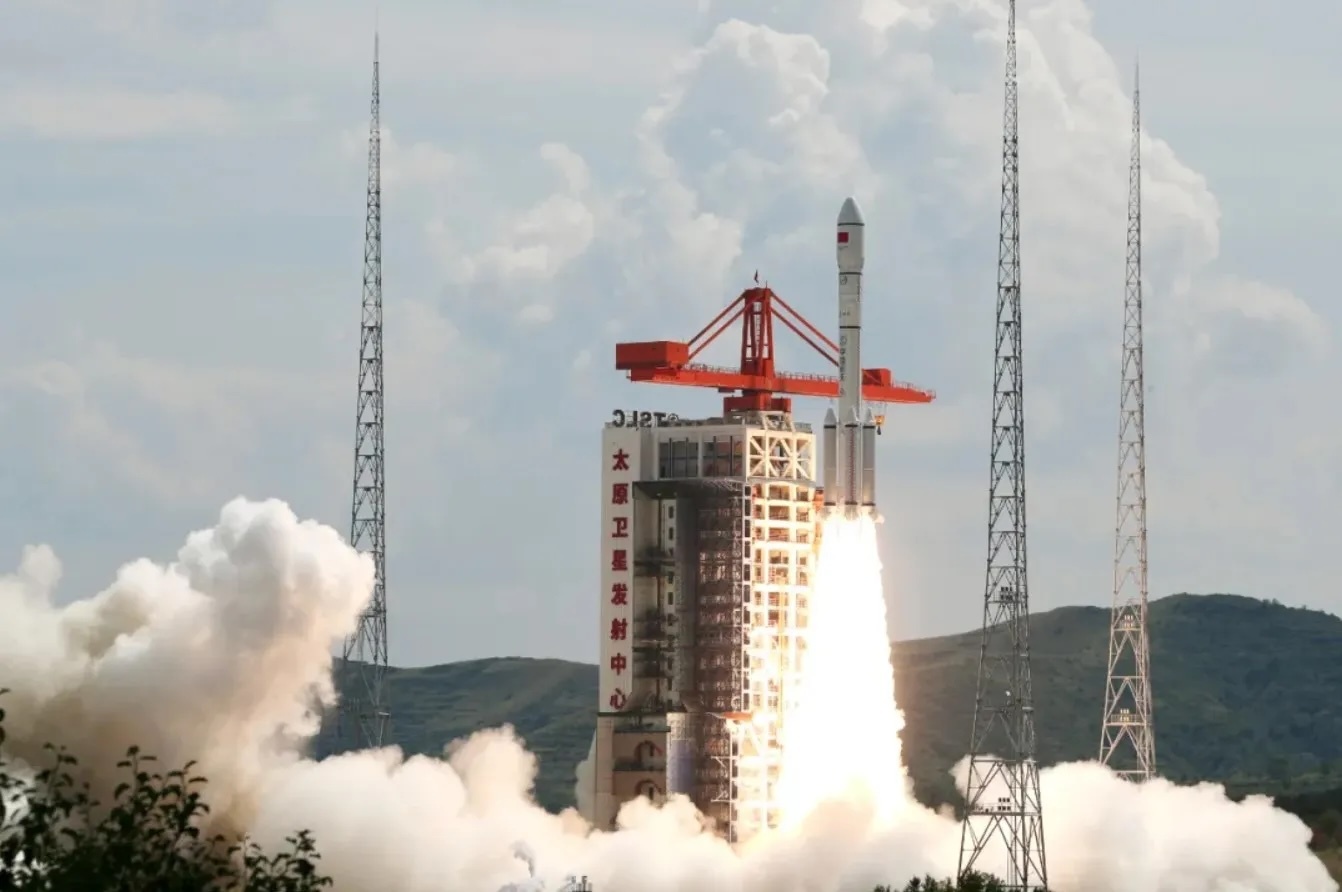6.08.2024

A Long March 6A rocket lifts off from Taiyuan spaceport, Aug. 6, 2024, carrying the first 18 Qianfan ("Thousand Sails") satellites. Credit: Ourspace
PRESTON, United Kingdom — China successfully launched the first batch of 18 satellites Tuesday for the Thousand Sails low Earth orbit communications megaconstellation.
A Long March 6A rocket lifted off from Taiyuan Satellite Launch Center, north China, at 2:42 a.m. Eastern (0642 UTC) Aug. 6. The China Aerospace Science and Technology Corporation (CASC) announced launch success just over two hours later.
The Long March 6A upper stage deployed 18 flat panel Qianfan (“Thousand Sails”) satellites into polar orbit for Shanghai Spacecom Satellite Technology (SSST).
SSST plans for the constellation’s first stage to consist of 1,296 satellites. 648 of these are to be launched by the end of 2025 to provide regional network coverage.
Earlier statements indicate that 108 satellites are planned for launch across 2024. These are expected to be launched in separate batches of 36 and 54 satellites. The completed network will consist of more than 14,000 low Earth orbit broadband multimedia satellites.
The Thousand Sails constellation aims to provide global internet access. It is one of two planned Chinese systems to challenge U.S. projects including Starlink. Thousand Sails is also intended to secure finite orbital slots and frequencies, and provide national internet coverage and data security.
The Chinese military has noted the potential military applications of such constellations, citing the use of satellites in Ukraine’s defense against Russia’s invasion.
Thousand Sails and China’s commercial space push
The low Earth orbit megaconstellation was earlier known as the G60 Starlink constellation. SSST announced in February it had raised 6.7 billion yuan ($943 million) for the constellation’s construction. Established in Shanghai’s Songjiang District in 2021, SSST’s project is also supported by the municipal government.
Shanghai has developed its own commercial space action plan, of which Thousand Sails is just one aspect. Shanghai’s goals include fostering new generation medium and large launch vehicles and intelligent terminals. It also intends to strengthen the development of integrated communications, navigation and remote sensing satellite technologies. Shanghai aims to create a space information industry worth more than 200 billion yuan ($28.2 billion) by 2025. Beijing also has its own commercial space action with measurable goals.
The plan also benefits from central government support, with commercial space last year designated as an “industry of the future.” The sector was subsequently noted as a priority in a government work report for the first time in March this year.
Thousand sails is not the only Chinese megaconstellation. The national Guowang (SatNet) 13,000-satellite project is being run by the China Satellite Network Group, set up in 2021. Its first batch of satellites is also soon expected to launch. However updates on the project are few and far between.
China’s plans for megaconstellations also require a huge growth in launch capabilities. The country is expected to utilize expected launch capacity from the country’s emergent commercial space sector to help realize these plans. The first launches of a number of new, reusable medium-lift launchers are expected across 2025.
The first pads of a commercial spaceport near Wenchang, Hainan island, have been completed. Further launch pads will also assist the required surge in launch rate.
The Long March 6A rocket used for Tuesday’s launch combines liquid propellant core stages with solid rocket boosters. The launcher can carry 4,500 kg to a 700-km sun-synchronous orbit. The rocket’s upper stage appears to have suffered debris issues in orbit.
The launch was China’s 35th orbital launch of 2024. CASC stated in February that China aimed to launch around 100 times this year. It added that commercial launch providers will account for around roughly 30 of these launches.
Quelle: SN
+++
China successfully launches new satellite group
China sent a new satellite group into space on Tuesday from the Taiyuan Satellite Launch Center in north China's Shanxi Province.
The satellite group was launched at 2:42 p.m. (Beijing Time) aboard a modified Long March-6 carrier rocket and entered its preset orbit successfully.
The launch marks the 530th flight mission of the Long March carrier rocket series.
Quelle: Xinhua
